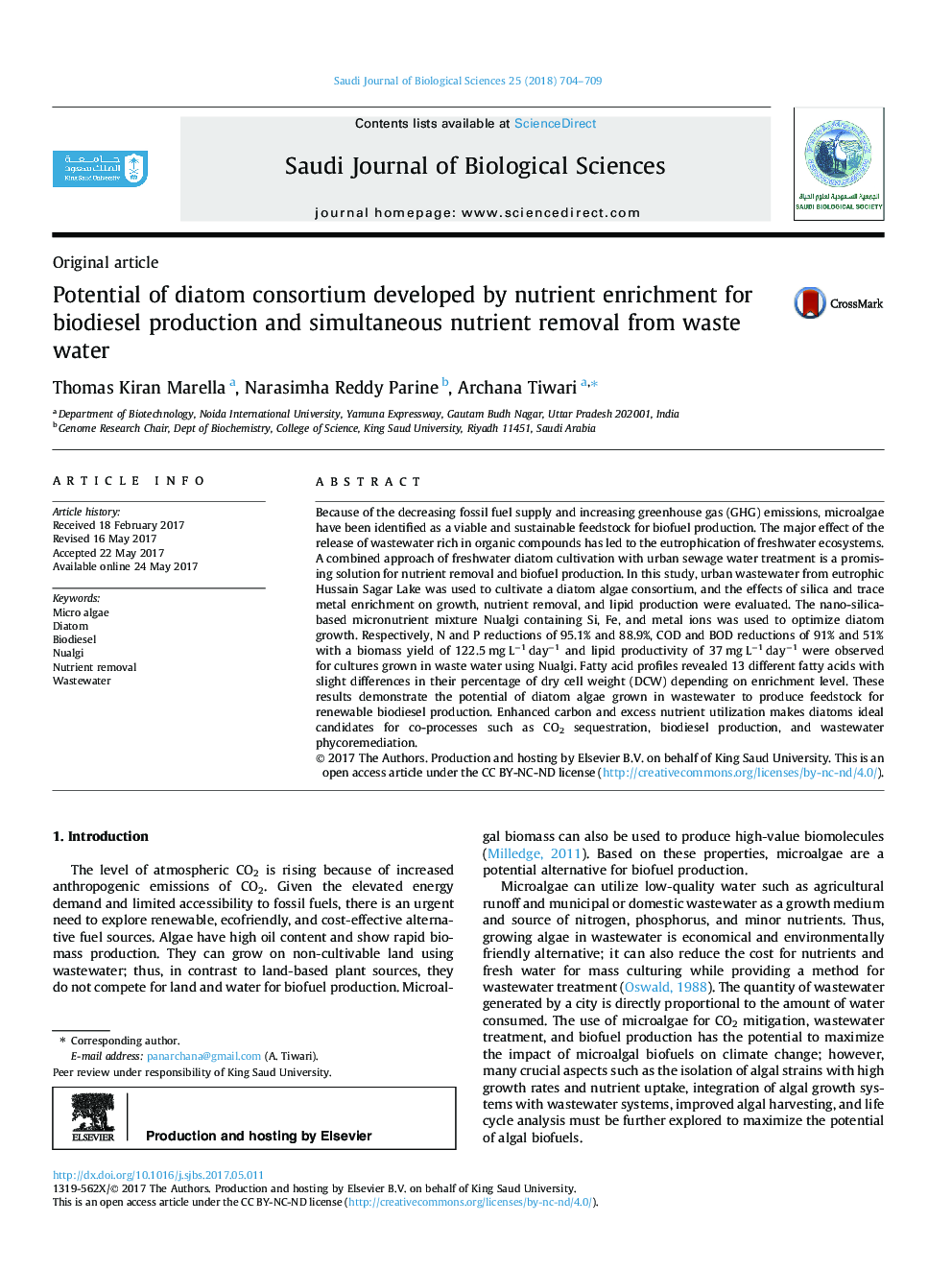| کد مقاله | کد نشریه | سال انتشار | مقاله انگلیسی | نسخه تمام متن |
|---|---|---|---|---|
| 8849774 | 1618657 | 2018 | 6 صفحه PDF | دانلود رایگان |
عنوان انگلیسی مقاله ISI
Potential of diatom consortium developed by nutrient enrichment for biodiesel production and simultaneous nutrient removal from waste water
ترجمه فارسی عنوان
پتانسیل کنسرسیوم دیاتوم که توسط غنی سازی مواد مغذی برای تولید بیودیزل و حذف مواد مغذی همزمان از فاضلاب ایجاد شده است
دانلود مقاله + سفارش ترجمه
دانلود مقاله ISI انگلیسی
رایگان برای ایرانیان
کلمات کلیدی
موضوعات مرتبط
علوم زیستی و بیوفناوری
علوم محیط زیست
بوم شناسی
چکیده انگلیسی
Because of the decreasing fossil fuel supply and increasing greenhouse gas (GHG) emissions, microalgae have been identified as a viable and sustainable feedstock for biofuel production. The major effect of the release of wastewater rich in organic compounds has led to the eutrophication of freshwater ecosystems. A combined approach of freshwater diatom cultivation with urban sewage water treatment is a promising solution for nutrient removal and biofuel production. In this study, urban wastewater from eutrophic Hussain Sagar Lake was used to cultivate a diatom algae consortium, and the effects of silica and trace metal enrichment on growth, nutrient removal, and lipid production were evaluated. The nano-silica-based micronutrient mixture Nualgi containing Si, Fe, and metal ions was used to optimize diatom growth. Respectively, N and P reductions of 95.1% and 88.9%, COD and BOD reductions of 91% and 51% with a biomass yield of 122.5 mg Lâ1 dayâ1 and lipid productivity of 37 mg Lâ1 dayâ1 were observed for cultures grown in waste water using Nualgi. Fatty acid profiles revealed 13 different fatty acids with slight differences in their percentage of dry cell weight (DCW) depending on enrichment level. These results demonstrate the potential of diatom algae grown in wastewater to produce feedstock for renewable biodiesel production. Enhanced carbon and excess nutrient utilization makes diatoms ideal candidates for co-processes such as CO2 sequestration, biodiesel production, and wastewater phycoremediation.
ناشر
Database: Elsevier - ScienceDirect (ساینس دایرکت)
Journal: Saudi Journal of Biological Sciences - Volume 25, Issue 4, May 2018, Pages 704-709
Journal: Saudi Journal of Biological Sciences - Volume 25, Issue 4, May 2018, Pages 704-709
نویسندگان
Thomas Kiran Marella, Narasimha Reddy Parine, Archana Tiwari,
